
The past year hasn’t been the easiest in search.
SEOs are literally unhappier, trying to keep up with unprecedented volatility, ever-expanding workloads and cascading internal expectations.
Couple all this with an unstable macro environment, reduced liquidity that depressed valuations, little-to-no acquisitions or exits, once-in-a-generation technology advancements like AI and a couple of crushing core algorithm updates to boot.
And yet, in the face of all this change, some things remain the same.
Here’s how some of the web’s best SEOs continue to future-proof SEO for years to come.
1. Search performance driven by brand (not the other way around)
If there’s one clear winner over the past year in SEO, it’s brands.
Big ones. Notable ones. Household-name ones.
Last year’s helpful content update didn’t trash just any old website, but no-name ones.
Some call it a conspiracy. (Because this is still the Internet we’re talking about.)
But the cold, hard truth is that big brands have always monopolized SERPs. Despite SEOs calling foul for years, the importance of “brand” driving SEO performance has been well-established for nearly a decade.
It’s not size alone that matters.
Successful brand building continually reinforces the underlying principles of search – authority, popularity, etc. – resulting in a compounding virtuous cycle.
That’s why, looking ahead, Wix’s Head of SEO Brand, Mordy Oberstein, continues to see “brand” driving search performance (and not the other way around).
- “I think we’re going to start seeing ‘SEO in context.’ Meaning, SEO in the context of content marketing or SEO in the context of brand marketing. That is to say, as part of my branding activity – which is fundamentally to drive cadence and momentum – I am going to think about both leveraging SEO to help me and how my wider brand activity will help my SEO.”
Therefore, it should also be no coincidence that the “biggest losers” in search are often the ones that exclusively rely on it too much. The one with a referral pie chart overwhelmingly weighted toward “Google.”
Oberstein cautions against this over-reliance:
- “At the risk of sounding heretical, I’ve never looked at putting all your stock into organic traffic as being a smart idea. If anything, all of the changes we’ve seen in 2024 have just reinforced this for me.”
- “SEO has its place in the marketing spectrum, it is not THE place – it has to come at the right moment in the site’s maturity – volatility and whatnot just reinforces that idea.”
That’s not to say Wix isn’t investing in SEO – it’s the opposite.
They’re still targeting big, juicy, lucrative keywords like “SEO tools.”

But the point is in how they’re doing it. Like all great brands, their approach and execution are what separate the wheat from the chaff.
Instead of racing to the bottom, crossing their fingers and hoping for the best while hitting publish on millions of AI glossary pages, they’re investing in actual community-building.
This includes everything from collaborating with other well-known experts in the SEO space across in-depth content, podcasts, videos and webinars:
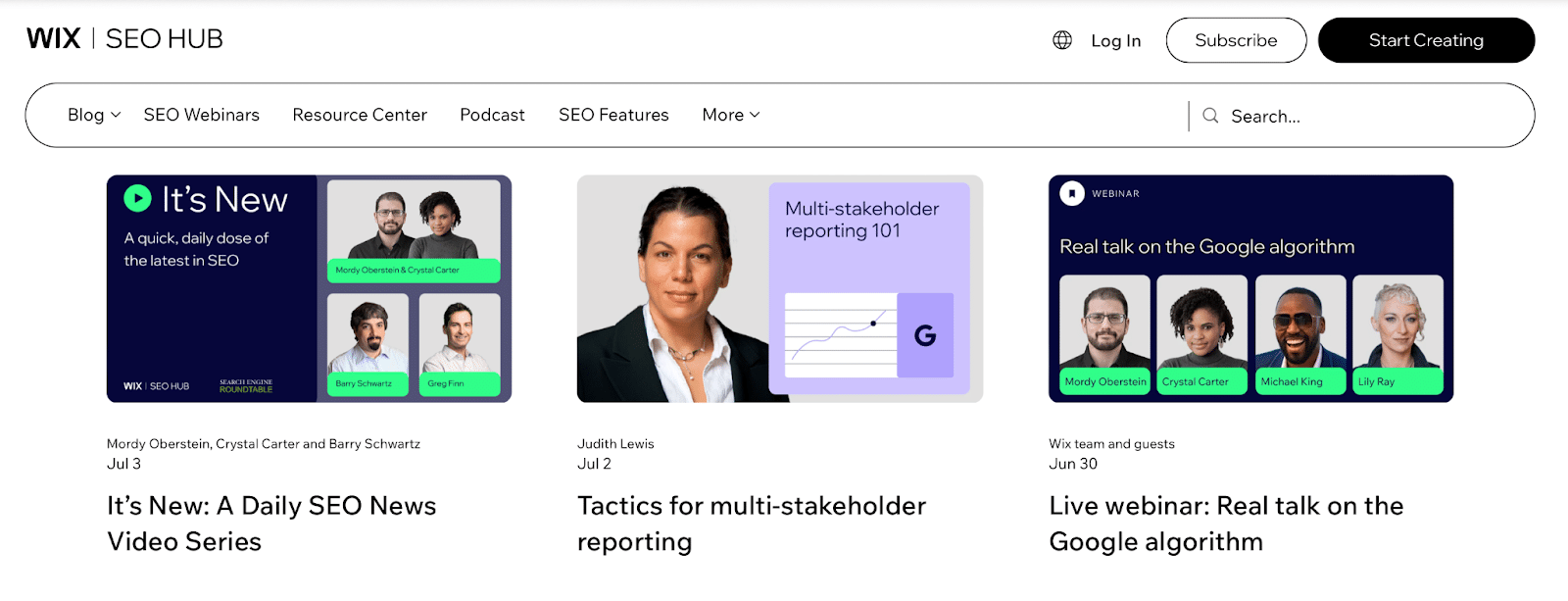
To actual in-person meetups organized around their ideal customer profiles (ICPs) biggest pain points:
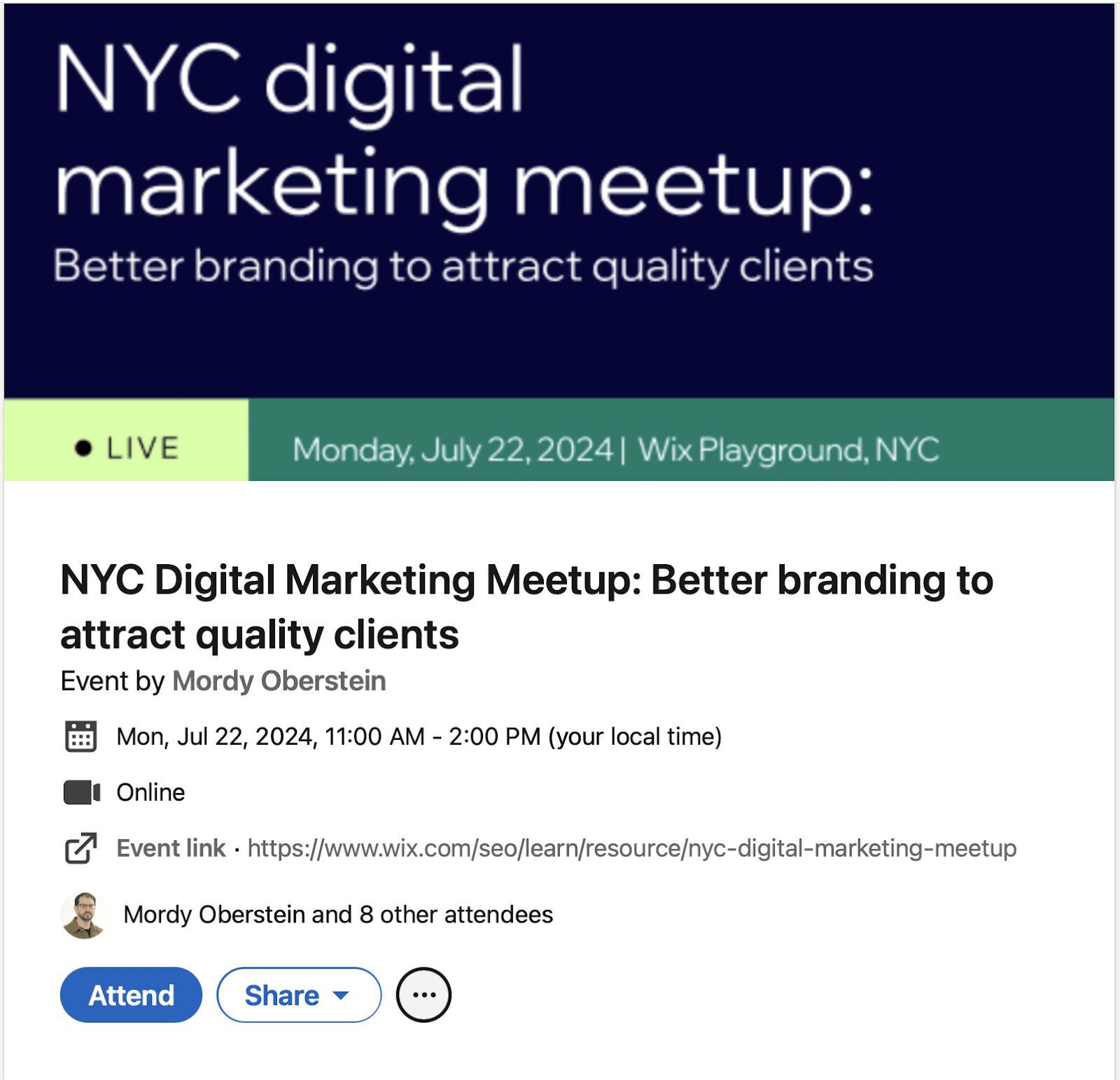
Wix’s newly revamped and excellent SEO newsletter also reinforces this same approach.
It regularly features commentary and insights from other industry experts in line with their own, spotlighting and centralizing all these activities in one easy-to-digest owned channel:
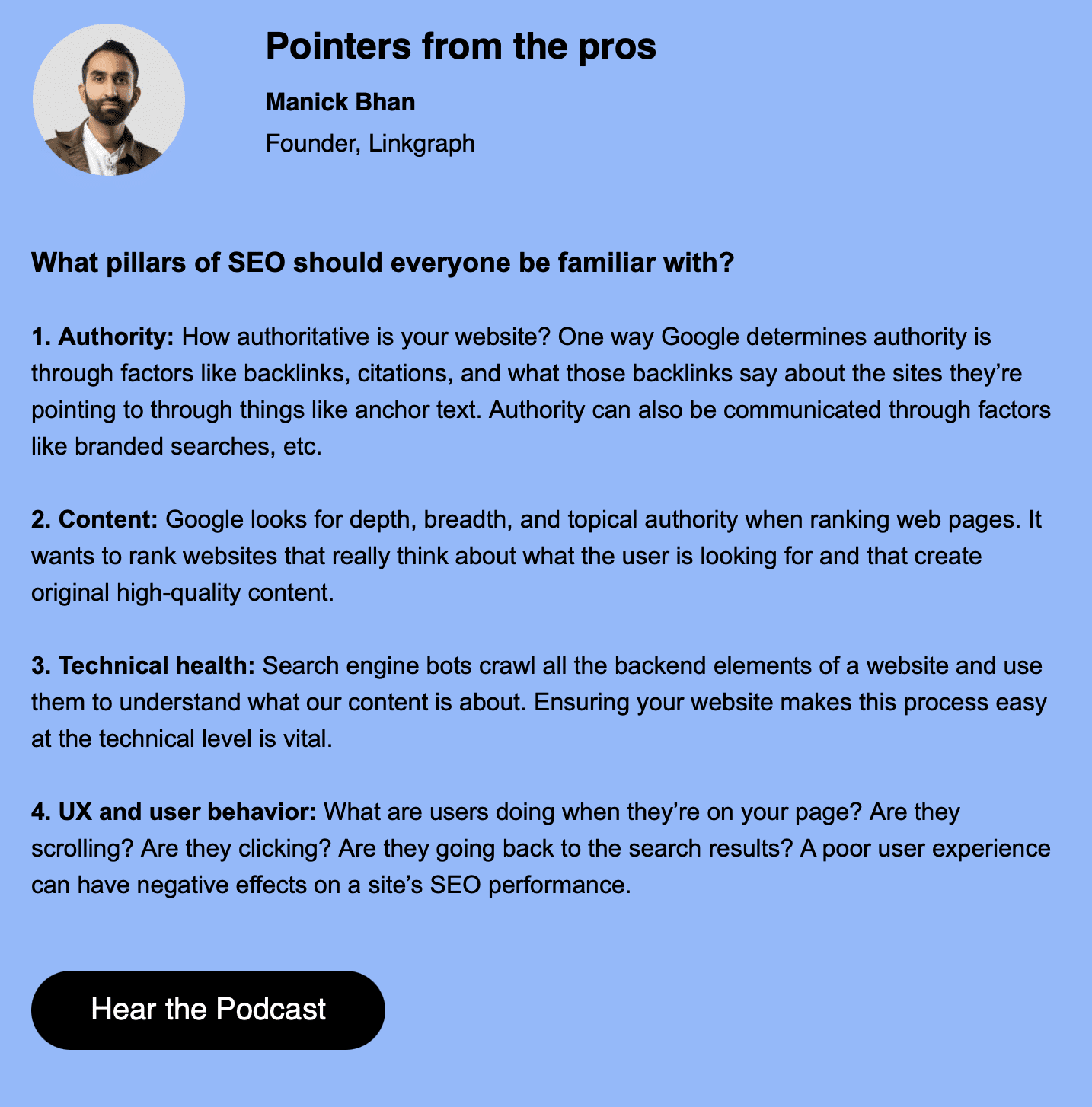
These activities don’t solely drive traffic or increase impressions. They create relationships, populate social channels and reinforce “owned” channel audiences to grow Wix’s frequency as much as its reach.
This helps Wix continue to increase its search market share not just this year but for the foreseeable future.
And doing it in a way that doesn’t rely on gimmicky shortcuts or gaming algo updates.
Yes, sending a few cold, crappy broken links might net you a few low-value links. But they’ll never develop the kind of relationships that would scale link building for years to come.
2. Tighter multi-channel alignment with search as fulcrum
Once-dominant ZoomInfo has struggled in sales SERPs recently.
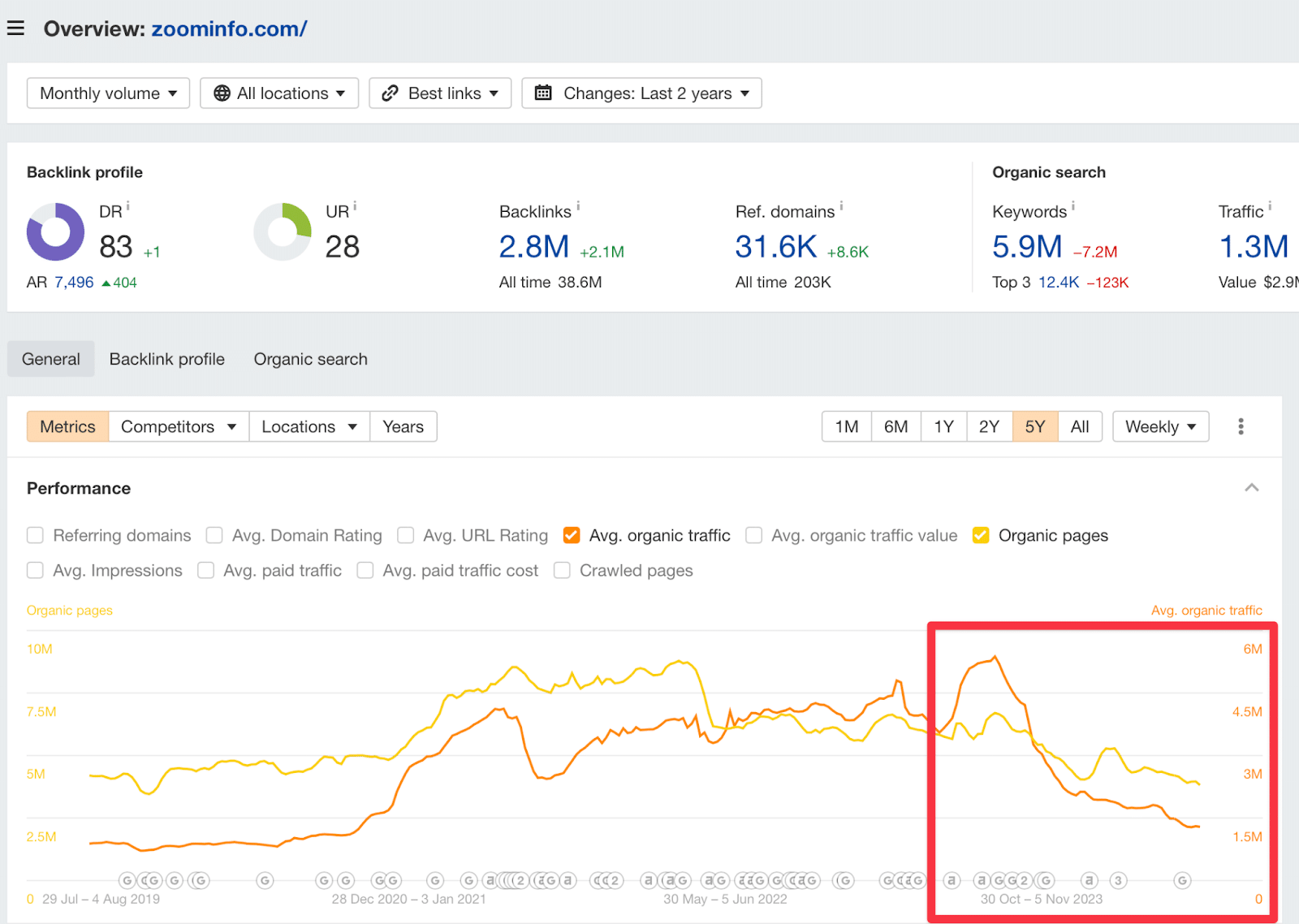
A quick traffic comparison over the past year spotlights the biggest positions dropped:
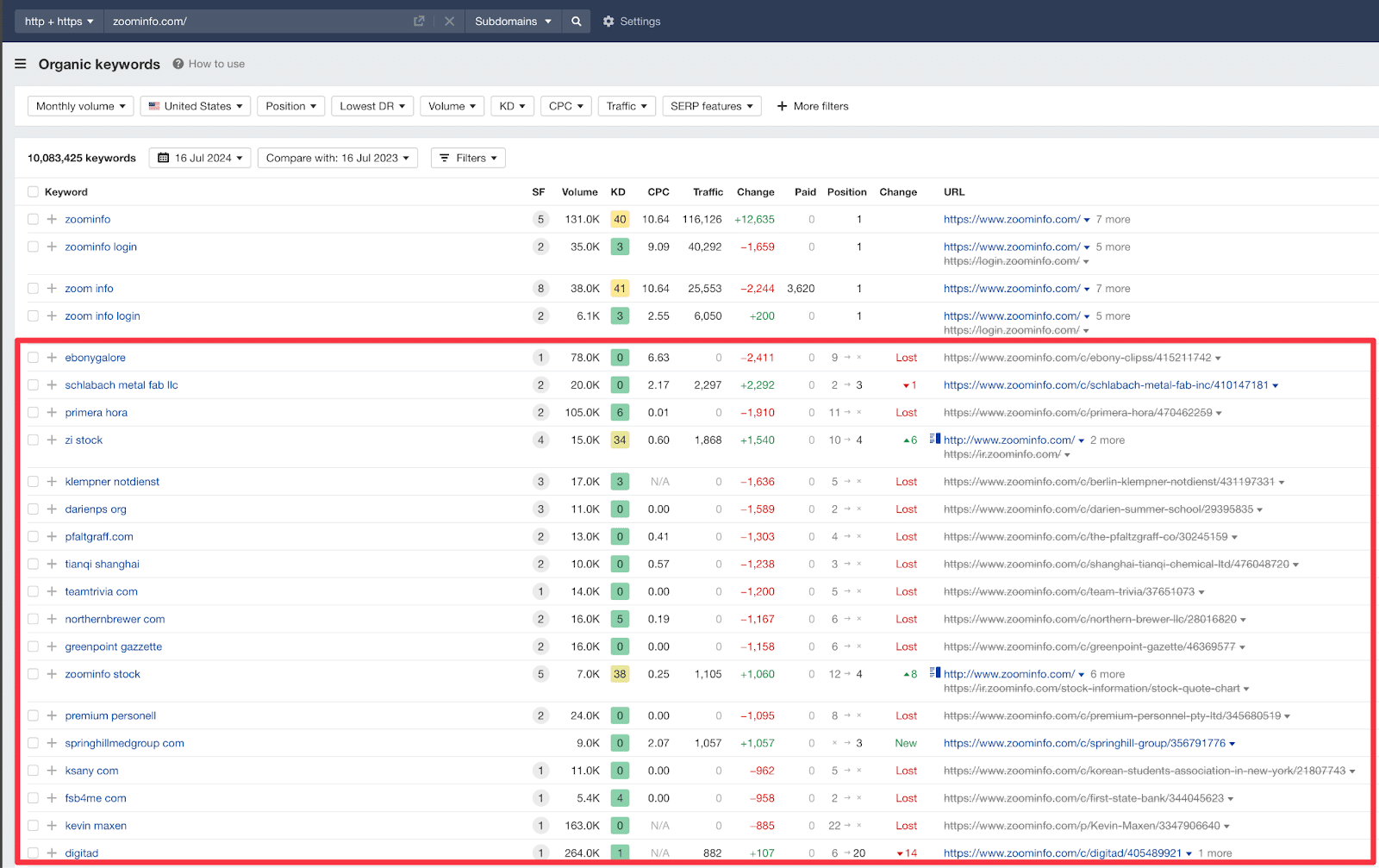
ZoomInfo’s organic search presence grew significantly due to a heavily programmatic approach to producing lots (millions?!) of people and brand directory pages.
However, as B2B growth advisor Gaetano DiNardi expertly pointed out on LinkedIn, recent spam and core algorithm updates have caught on and often come down hard on get-rich-quick tactics like these.
Contrast and compare that approach with competitor Cognism, one of the fastest-growing revenue intelligence brands over the past five years.
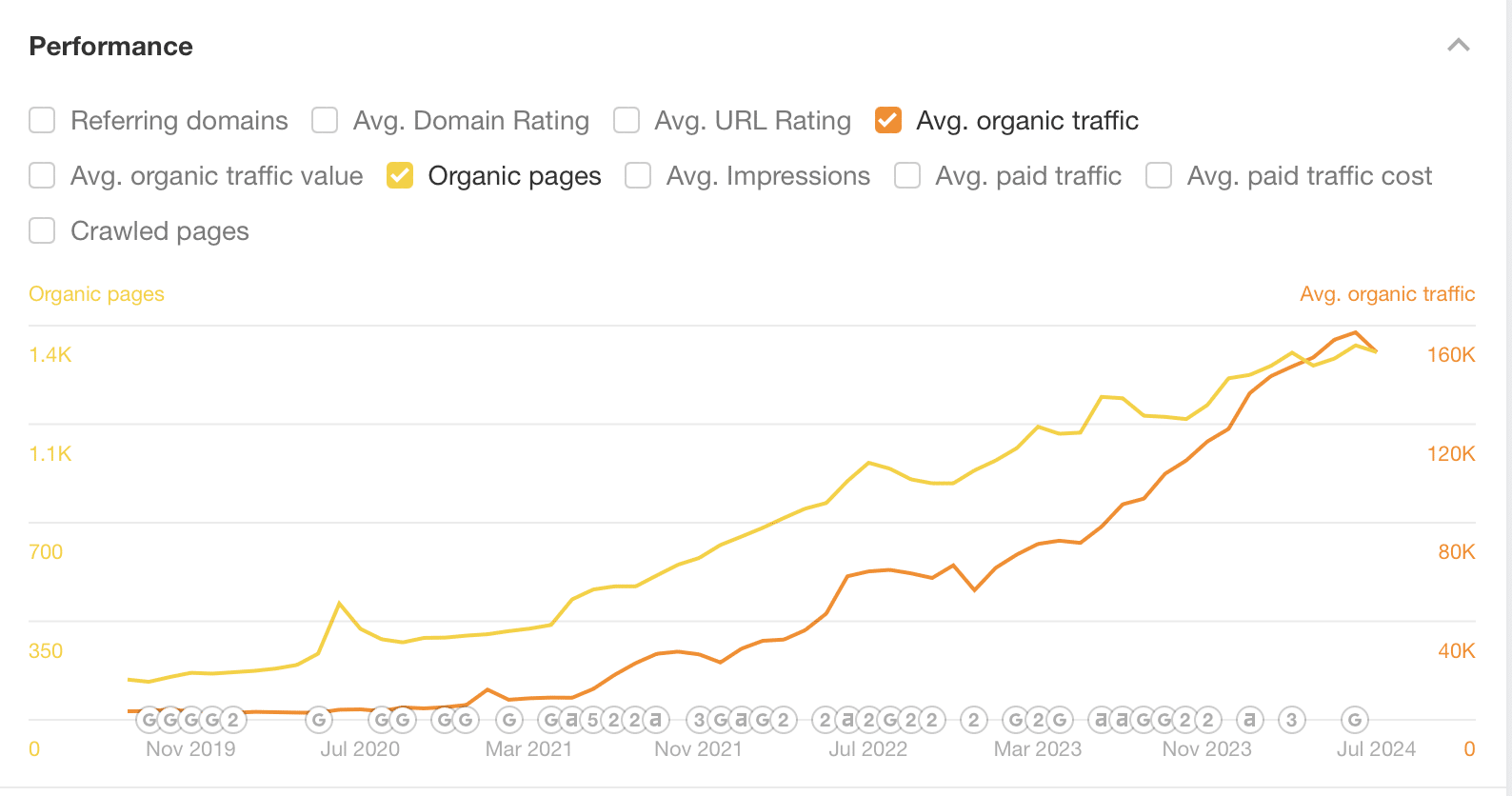
Once again, it’s not through tricks, hacks, shortcuts, AI content, rainbows or unicorns, but good, old-fashioned brand-building across multiple channels at the same time.
Monika Kisielewska, SEO content manager at Cognism, confirmed that they’re continuing to heavily lean into this integrated direction.
- “Since AI Overviews pulls results from different sources, including paid ads, YouTube, etc. Cognism’s paid and SEO teams are now working more closely together and reporting directly to the VP of Paid Acquisition.”
- “When you see PPC and SEO as complementary channels, it helps align keyword targeting and avoid burning money.”
Obviously, then, any good search strategy starts with pairing ruthless keyword prioritization alongside a machine to produce excellent content from subject experts at scale.
But this is (and should always be) step one in the process.
- “My approach to SEO content has always been to publish quality content that answers user intent. The helpful Content Update has validated this approach and pushed me to pay even more attention to user experience.”
- “In 2024, my goal is to improve user engagement from the moment the search begins. This means doubling down on optimizing elements such as title tags, feature snippets, page navigation, content structure, etc.,” Kisielewska said.
Driving the “output” or quantity of pages is always a goal. Big brands are big for a reason.
However, that’s not done at the expense of taking care of the basic fundamentals of on-page optimization.
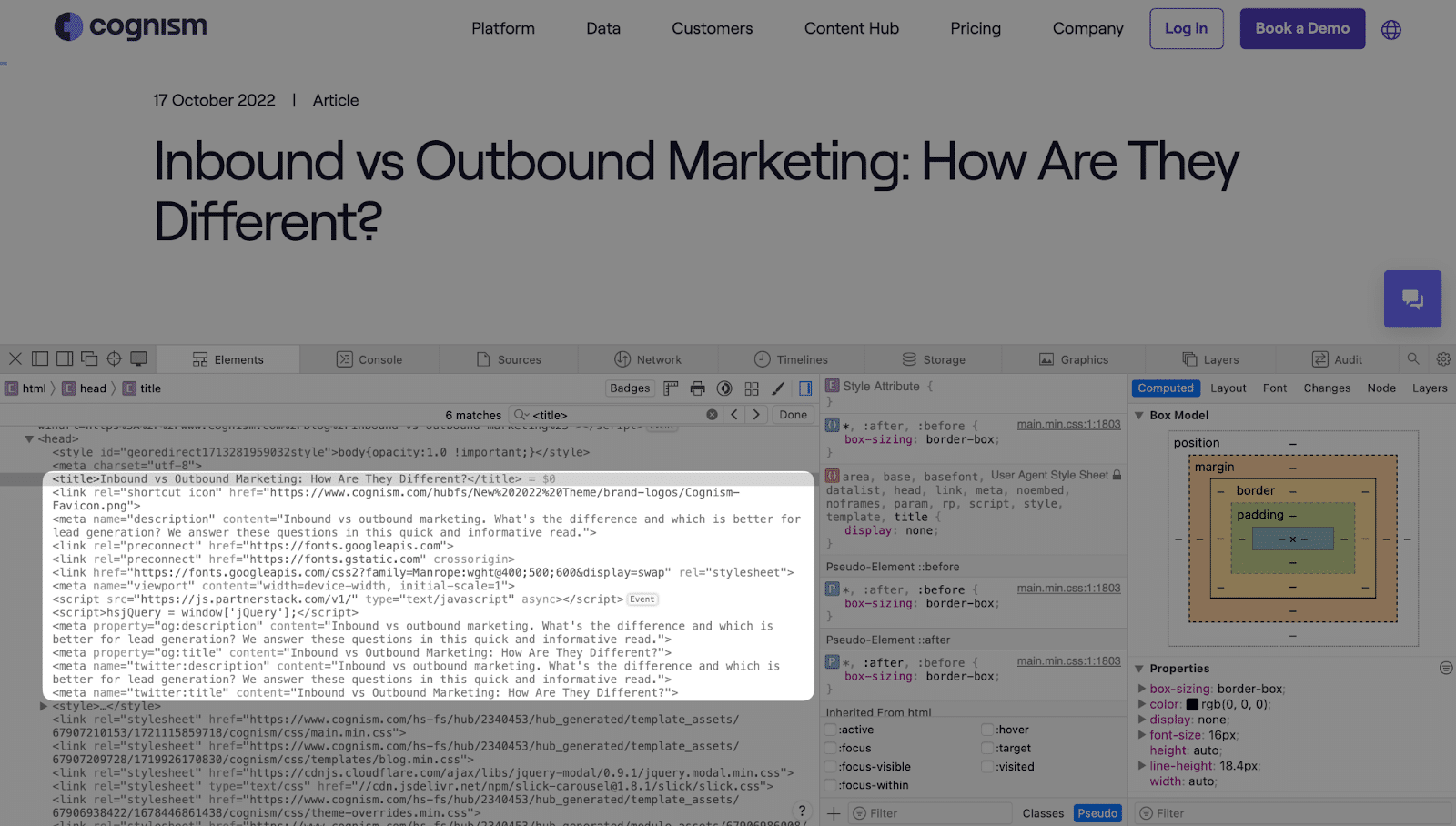
Content distribution then becomes holistic and not separate from search, where the two work in unison, complementing each other.
Kisielewska added:
- “I expect a greater overlap of SEO with paid, social and email channels to fuel growth in 2025. I’m excited about our upcoming ‘big rock campaigns’ such as the ebook for marketing leaders, ‘Diary of a first-time CMO.’”
This diary is equal parts search content, social, multimedia, community building and more.
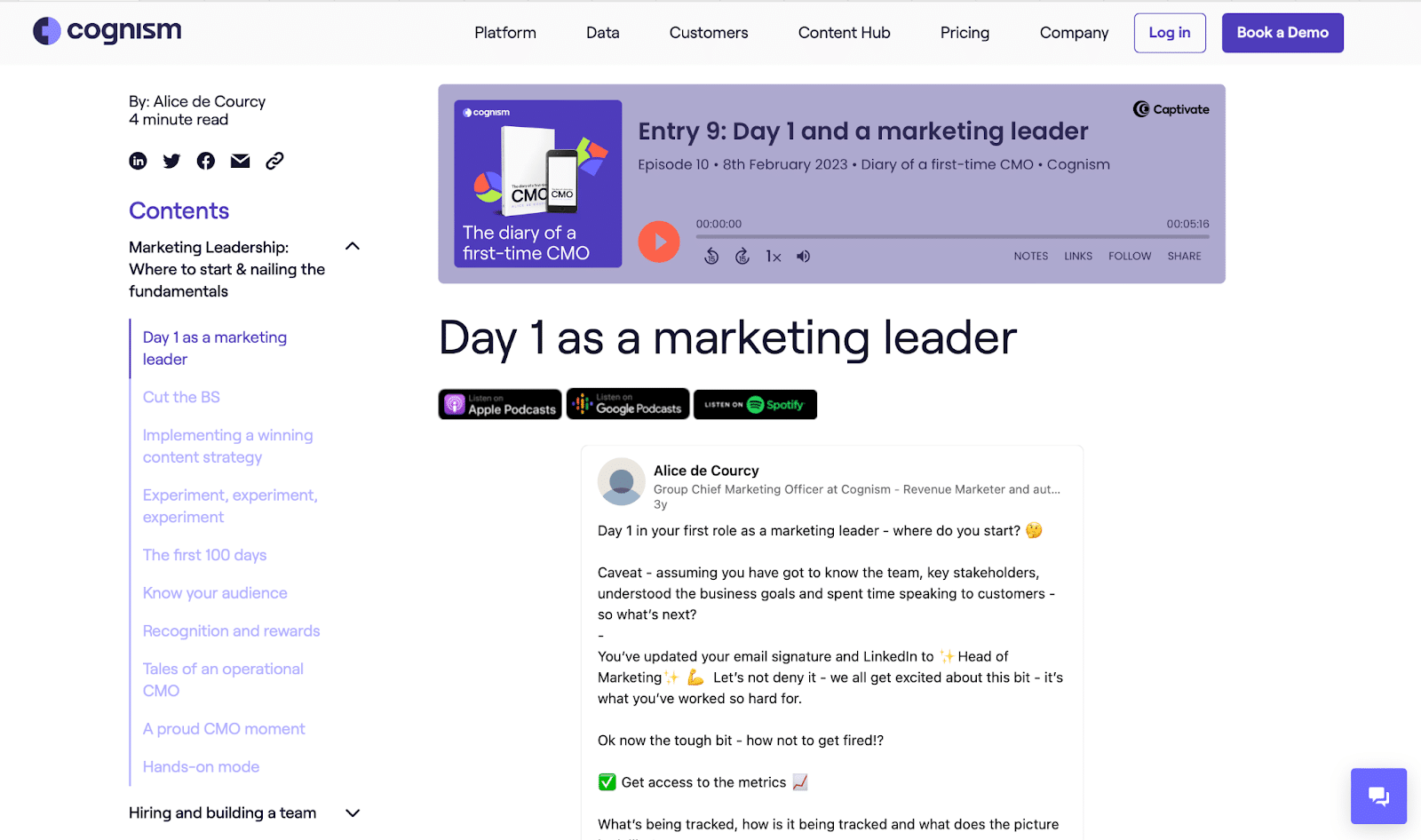
- “These campaigns have traditionally been launched on social media and then promoted on paid. Moving forward, the plan is to incorporate the SEO team at the start of each campaign to ensure the DG team is using the best format and other best practices to optimize them for search. This initiative aims to create evergreen content that positions Cognism as an industry expert without additional spend on ads.”
Even the more classic search-driven, long-form content also includes everything from custom design to related podcast episodes:

And even embedded YouTube videos pulled from their 500+ archive:
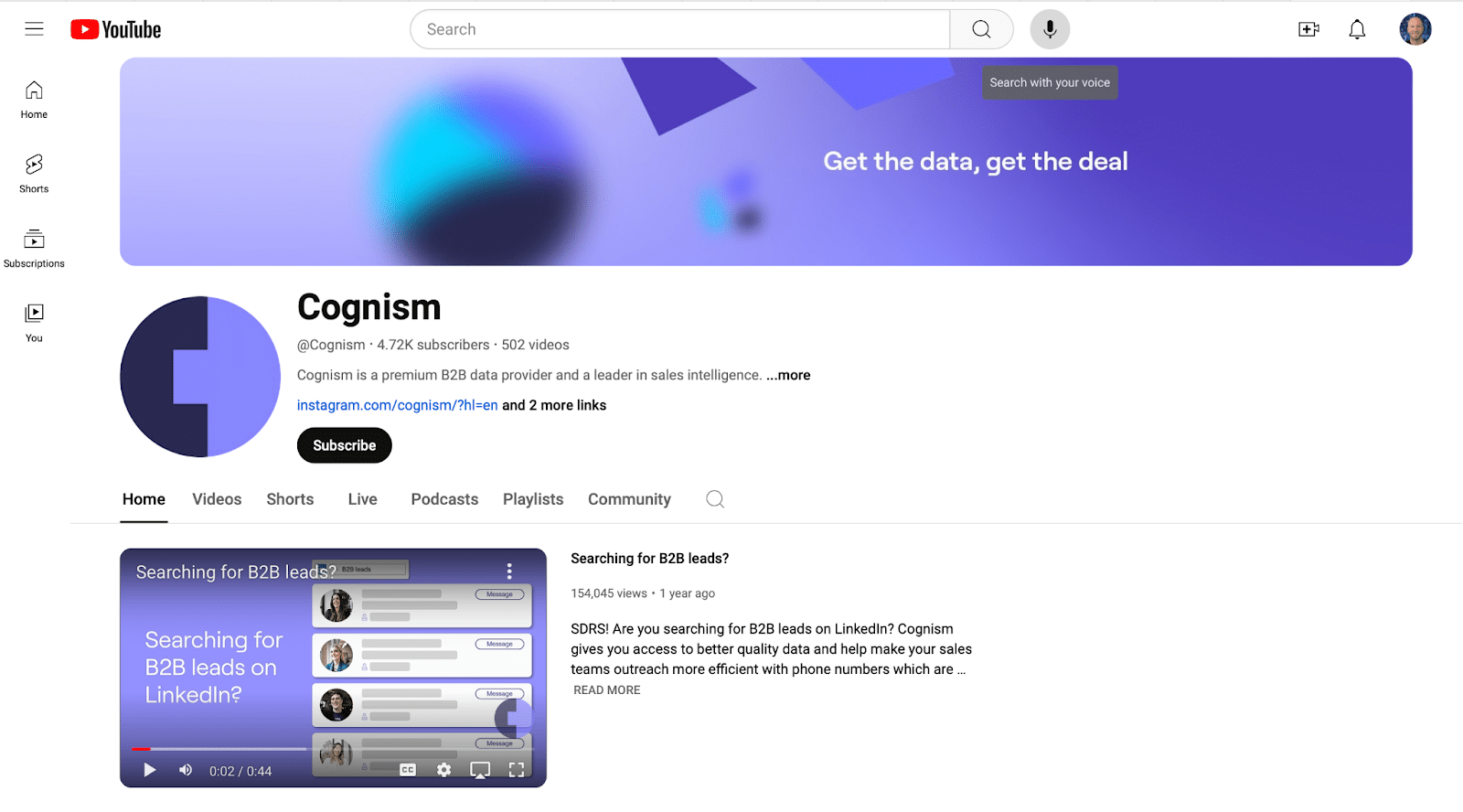
3. Renewed focus on relevant traffic (not empty-calorie traffic)
Google’s AI Overviews have pogo-sticked across SERPs since its rollout.
So much so that it’s too premature for Oberstein to draw any meaningful conclusions.
- “On the AI Overviews, I am very much advocating for waiting and seeing and not changing much unless there’s a specific case with a specific issue.”
- “I don’t think Google a) Has a handle on these, b) Is as energetic to use them as they seem to be, c) Has set the final layout/functionality of them.”
What is clear, however, is that many of the recent developments are an evolution of previous trends vs. some brand-new developments.
The top-of-the-top of the funnel – basic information-based queries – are the ones most at risk because they’ve been instantly answered with featured snippets and knowledge panels for many years already.
Google’s made no bones about this, wanting instead to encourage searchers to follow-up basic queries and help push them down into the chunky middle for brands to capture.
Like any good SEO, Kisielewska has already been planning ahead for this eventuality:
- “With AI Overviews, users get more answers directly on the SERP (approx. 60% of searches end with zero clicks, according to the SparkToro study).”
- “I’ve noticed a similar trend: Cognism’s clicks don’t increase at the same rate as impressions despite no visible changes to keyword position. It does change the SEO game – the quantity of clicks is no longer the sole measure of success; it’s the quality of engagement.”
So, instead of purely focusing on empty-calorie traffic, which is also the kind most AI content can only tackle, Kisielewska focuses on meaningful visits from actual would-be buyers.
- “In practice it means MOFU keywords are going to be most impacted by the AIO. To measure the quality of the clicks, you can use an estimated traffic value in tools like Ahrefs. Or use attribution tools for more precise ROI calculation.”
- “My job as an SEO content manager in 2024 and beyond is to answer more nuanced questions the target audience has. I also intend to implement a monitoring system to understand the impact of AIO on the traffic.”
- “Here’s how: start by auditing GSC TOFU keywords and assessing what can be disrupted with AI. Next, map out MOFU keywords that can mitigate the potential impact on TOFU content. Add unique perspectives to your content.”
The goal of SEO then, shouldn’t be to just drive the most meaningless traffic or rank as fast as possible for anything, but actually focus on helping to transform qualified traffic into potential customers and advocates.
That quality traffic is often found in the middle-to-bottom of the funnel queries vs. the tippy top.
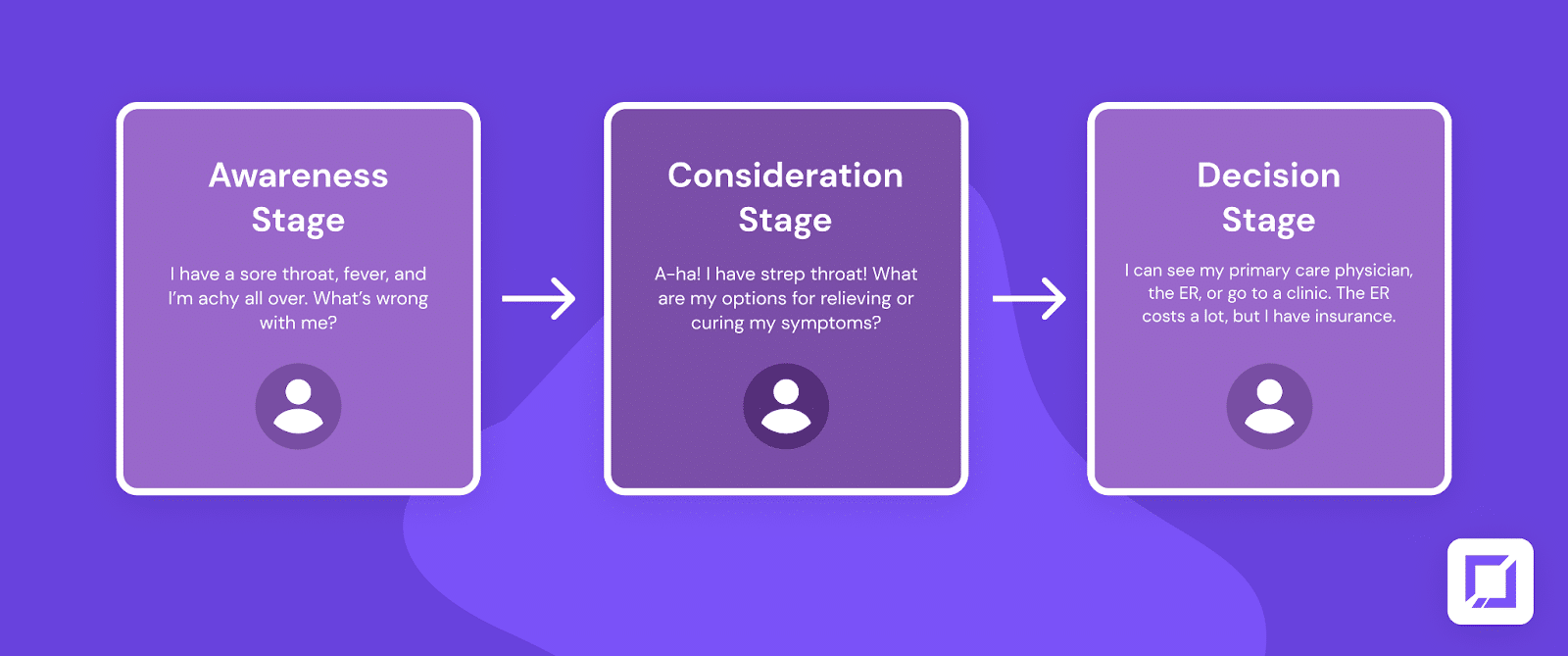
In other words, less time obsessing over basic “what is”-style queries that will continue to be eroded through AI Overviews + AI content + Enterprises and more time spent on threading the needle to figure out where Cognism can add unique, differentiated insights for its ICPs.
Timeless SEO strategies for lasting success
There’s a reason why some brands win at search over the long haul while others struggle for scraps.
It’s the same reason the former will continue to succeed over the years to come, while the latter inevitably gets pummeled at some point during the same time.
Winning search has always been about building the best brand, first.
This is done by developing a network of advocates, collaborating with complementary brands or experts, and using a variety of distribution methods that all come back to support search objectives at the end of the day.
The best SEOs embody these principles, working cross-functionally to build truly long-term growth engines. They’re heads-down focused on the end game vs. getting sidetracked by the latest shiny tactics or shortcuts that will compromise their ideals.
Because they know one approach is sustainable over the next decade, while the other will be proved to be fleeting at best.
source https://searchengineland.com/future-proof-seo-timeless-444324


0 Comments